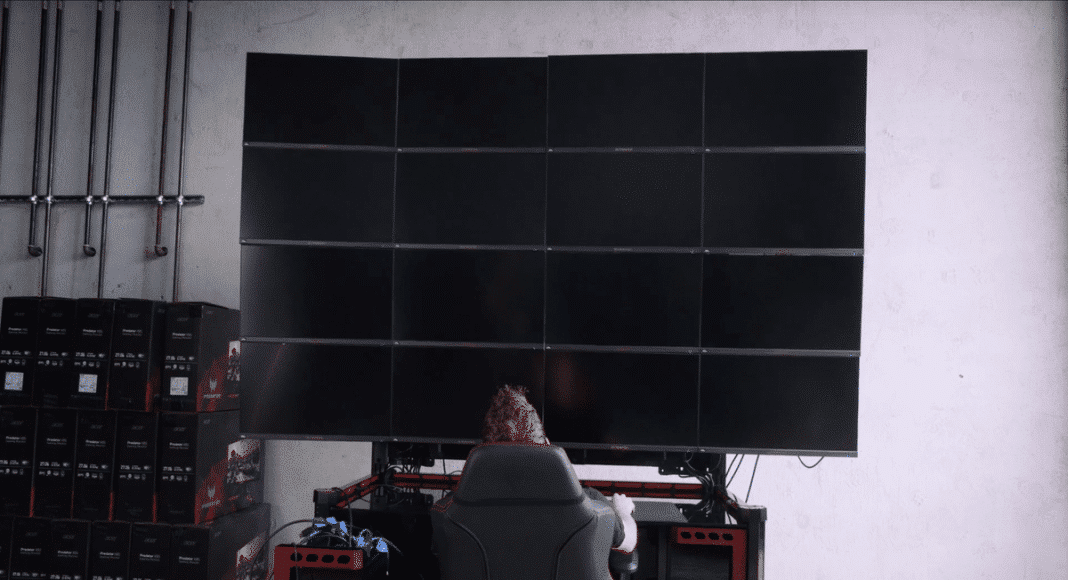Serious gamers obsess over graphics. During the past decade an arms race has not-so-secretly brewed across platforms for who can produce the clearest and crispest image. Microsoft and Sony have battled with one another trying to best the other, but is 16K gaming the future?
Sony debuted 4K gaming with the PS4 Pro model late last year, beating Microsoft to the visual punch. But Microsoft announced the Xbox One X at E3 this year, with a model that Xbox head Phil Spencer says in “a different league” than Sony’s platform. Opinions aside, that each company is able to offer 4K gaming at a price point below $500 is a massive achievement.
But in the PC gaming world, Sony and Microsoft’s visual prowess is plain weaksauce. Because if you really care about graphics—like really, really care—nothing compares to the visual fidelity available to PC gamers. Thanks to constantly evolving graphics cards and the ability to always upgrade your computer, PC gamers will always hold the upper hand against console gamers—though this comes at a cost. A true 4K gaming computer will easily cost you more than $1,000.
Why stop at 4K, though? That’s the challenge YouTuber Linus Sebastian took upon himself. Instead of just 4K gaming, Linus showcased the ability to play games in 16K resolution—an absolutely bonkers number. Posting the video on his popular Linus Tech Tips channel, Linus constructed a gig with 16 4K monitors all working in sync with one another. He played games like Minecraft, Tomb Raider, and Civilization on his contraption that more resembled the setup of an evil genius hacker than an avid gamer.
While a 16-screen rig is a huge feat, multi-screen setups for PC gaming isn’t exactly new. Super powerful graphics cards begin supporting three-screen setups in the early 2010s, enabling gamers to see, well, everything. Though not all games supported this output, it was a huge evolutionary trend forward. Still, 16 4K screens smokes all that comparatively, even if it is ridiculous (albeit in a great way).
You might wonder the purpose of it all, though. Most of the games Linus attempted to play at 16K resolution rendered slowly or outright crashed. At best the games that did work produced minor lag. If you were seriously trying to game, this setup would kind of suck.
Yet that isn’t the right approach, is it? No one knew 16K gaming was remotely a possibility until this week. Criticizing the games failing is an extremely limited and lazy view here; developers wouldn’t code their games to support such graphics because developers didn’t know anyone was wacky and crazy enough to attempt it. What this is about instead is opportunity. Could this be a possible future of gaming? Perhaps.
It reminds me of Kanye West, of all people. Back in 2012, he debuted a film called Cruel Summer at Cannes. Written and directed by Kanye, the film was shown with a seven-screen setup: three up front, one on the floor, one on the ceiling, and one each adorning the walls. The movie was lauded by critics, lavishing praise that Kanye’s seven-screen movie theater could be a revolutionary step forward for film. As the Los Angeles Times noted, Kanye’s movie “makes a 3-D Michael Bay effort feel like an iPad short.”
As you know, that filmic revolution hasn’t exactly happened. Seven-screen movie theaters aren’t available anywhere because it’s not an affordable venture. What movies could be shown except Kanye’s? I mean, who else would be ludicrous and bold enough to even attempt something like that?
You can’t help asking a similar question about Linus’s 16K resolution experiment. It isn’t really meant to work in the traditional way technology does. Instead view it as a fun challenge intended to inspire future inventions down the road. The possible total immersive capabilities is tantalizing for the next generation—just don’t expect to see 16K games or monitor setups anytime soon. For now, though, it’s enough just to dare to dream.


